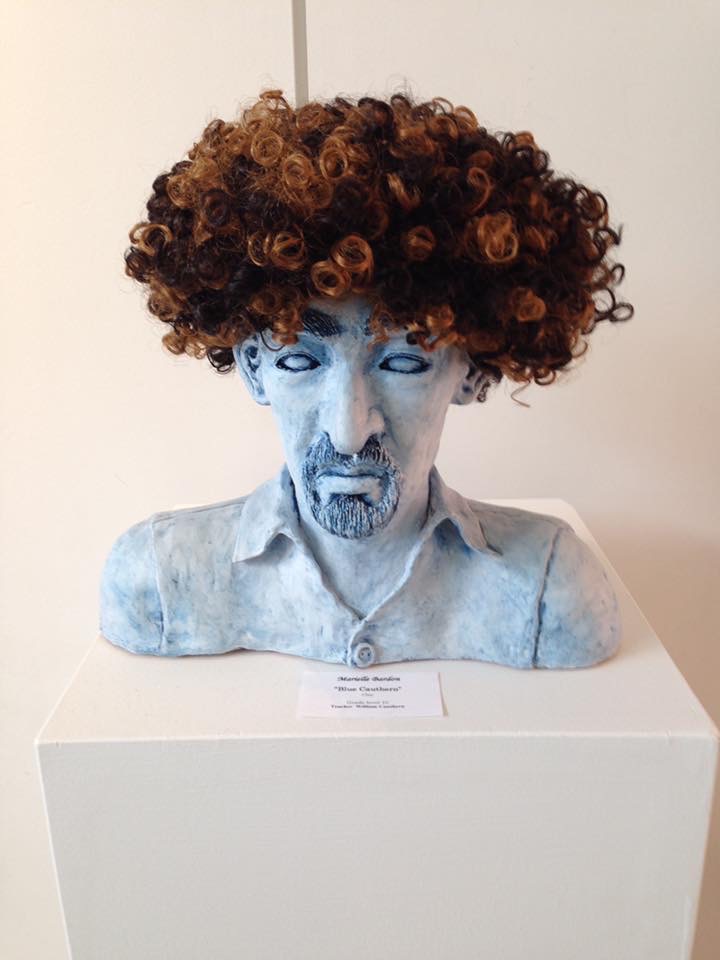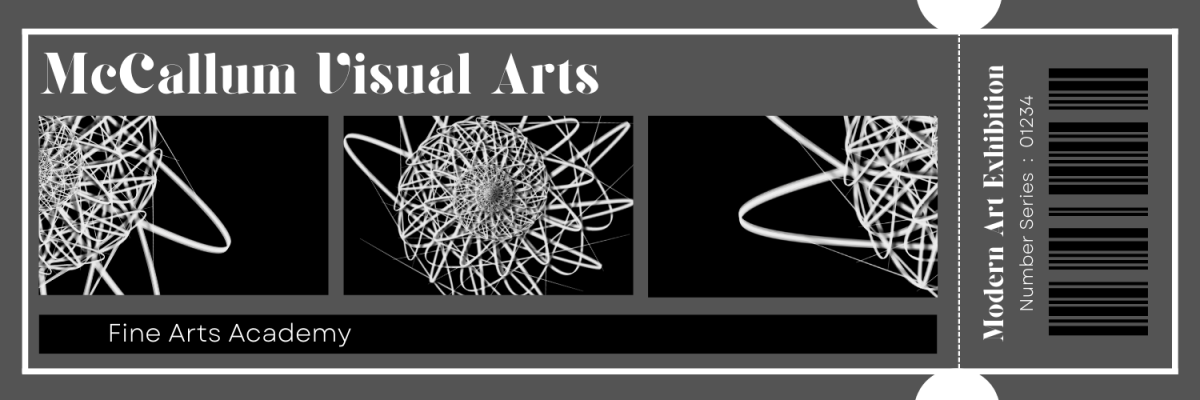
VISUAL ARTS PROGRAM
Visual Arts Major Requirements:
The Visual Arts Program at the Fine Arts Academy currently focuses on the development of students’ technical skills and critical thinking in a variety of media. The visual art aspect of the larger integrated curriculum emphasizes the application of art elements and principles of design in art production, the study of art history and diverse cultural heritages, and the development of visual discrimination and judgment through art criticism and aesthetics.
Upon successful completion of Visual Arts Foundations, students may take year-long courses in drawing, painting, printmaking, fibers, sculpture, ceramics, digital photography, and jewelry. Advanced placement studio courses are also available.
To graduate with a major in visual arts, students are required to complete six credits in art, including one in art history.
Visual Arts Class Offerings
Art 1 is an entry-level survey course in which students: create artworks in a variety of media using diverse techniques (art production); study the work of artists, stylistic periods, and cultures (art history); and develop an understanding of the critique process and learn to read and interpret the visual language (art criticism). Students will complete projects designed to teach and develop many techniques and skills, including drawing, sculpture, printmaking, design, painting, and ceramics.
Visual Arts Foundations (Design I/II for art majors): This course is required for our first year visual art majors who have been accepted into the Fine Arts Academy. VA Foundations is a survey course in which students: create artwork in a variety of media using diverse techniques (art production); study the work of artists, stylistic periods, and cultures/cultural relevance (art history); and develop an understanding of the critique process and learn to read and interpret the visual language (art criticism). Students will complete projects designed to teach and develop many techniques and skills including: ceramics, collage, design, drawing, mixed media, painting, printmaking, and sculpture. This course is a solid foundation in a variety of media and fosters personal expression with a development of problem solving skills.Course fee to cover supplies(scholarships are available when needed).
Students gain an understanding of two-dimensional design with an emphasis on drawing. Students are expected to develop a working knowledge of a variety of two-dimensional media while increasing their ability to see, analyze, and use formal elements of art and principles of design. To begin, we focus on formal drawing elements with traditional drawing media on a variety of surfaces. As the year progresses, we explore how visual elements relate to artistic expression and content and how to incorporate a variety of mixed and nontraditional media in drawing. In addition, students are introduced to a variety of art movements, visual images and artists throughout history. Students explore design elements and principles through composition, abstraction and expression. They also study contour, gesture, and other techniques with an emphasis on representation of volume. Homework hours may vary depending on individual work pace, project requirements, and dedication. Course fee required to cover supplies (scholarships are available when needed).
The primary purpose of this class is to continue the student’s art education using painting as a primary focus for study. Color, composition, movement and texture will be some of the many principles that we will aim to enhance throughout the course of the year. The students will be expected to develop a working knowledge of a variety of painting media, while increasing their ability to see, analyze and use formal elements of art in their projects, required writing assignments, and classroom dialogue. The curriculum, paving, and outside work time gets more rigorous as the students move up each level. Art elements and principles or design are used to strengthen concepts. Various styles of paintings, including contemporary painting are analyzed. Students experiment with a variety of techniques and materials including tempera, synthetic media (acrylic), watercolor, gouache, and water based oils on various surfaces such as paper, wood, canvas, canvas board, and cloth. Homework hours may vary depending on individual work pace, project requirements, and dedication. Course supply kits needs to be purchased (scholarships are available when needed).
Students develop a portfolio addressing a very broad interpretation of drawing issues and media. Light, shade, line quality, rendering of form, composition, surface manipulation and illusion of depth will be addressed. Abstract, observational and inventive works through a variety of means, which could include drawing, painting, printmaking, mixed media, etc, may be used. Work will be divided into two sections of the portfolio including Quality and Sustained Investigation. Students will create a variety of work that focuses on one subject or concept and develop pieces over a period of time. There is also an emphasis on process, documentation, and written and oral critiques. At the end of the year, students will submit their art portfolio to college board to be rated with scores potentially earning students college credit. This course is rigorous and requires hours outside of class to complete assignments. In addition there is a fee to submit a portfolio to College Board. Students on free and reduced lunch may receive scholarships or fee vouchers to submit their portfolio. Fees are determined by College Board. Course supply kits needs to be purchased (scholarships are available when needed).
Ceramics 1 will utilize the knowledge and skills learned in Art 1/Design 1 and incorporate introductory pottery skills. Students will also explore the unique pottery forms of different cultures and will be required to learn both hand-building and wheel throwing techniques. Students are expected to reflect and evaluated project timelines and skill development throughout the year. Course fee required to cover supplies(scholarships are available when needed).
Students will fabricate sculpture in a variety of materials. Through visual and tactile experiences, we will explore the innovative use of materials in the realization of ideas. This provides the basis for students to develop an individual visual language, which in turn is informed and shaped by immersion in visual culture both present and past. Students will acquire the capacity to make both structural and aesthetic decisions. Students will develop competencies and creative skills in problem solving, communication, and management of time and resources that contribute to lifelong learning and career skills. Students are expected to reflect and evaluated project timelines and skill development throughout the year. Course fee required to cover supplies (scholarships are available when needed).
Students develop a portfolio addressing a very broad interpretation of photography issues and media. This is a self-directed course where students are expected to meet weekly deadlines. Work will be divided into two sections of the portfolio including Quality and Sustained Investigation. Students will create a variety of work that focuses on one subject or concept and develop pieces over a period of time. There is also an emphasis on process, documentation, and written and oral critiques. At the end of the year, students will submit their art portfolio to college board to be rated with scores potentially earning students college credit. This course is rigorous and requires hours outside of class to complete assignments. In addition there is a fee to submit a portfolio to College Board. Students on free and reduced lunch may receive scholarships or fee vouchers to submit their portfolio. Fees are determined by College Board.
AP 3D design course centers on the development of a portfolio that is designated for work that focuses on the use of three-dimensional (3-D) elements and principles of art and design, including point, line, shape, plane, layer, form, volume, mass, occupied/unoccupied space, texture, color, value, opacity, transparency, time, unity, variety, rhythm, movement, proportion, scale, balance, emphasis, contrast, repetition, connection, juxtaposition, and hierarchy. Students should consider how materials, processes, and ideas can be used to make work that involves space and form. Students can work with any materials, processes, and ideas. Figurative or non-figurative sculpture, architectural models, metal work, ceramics, glasswork, installation, performance, assemblage, and 3-D fabric/fiber arts are among the possibilities for submission. Still images from videos or film are accepted. Portfolios consist of two parts Sustained Investigation (15 digital images of artworks and process documentation that demonstrates sustained investigation through practice,) experimentation, and revision ***Some may be details or process images and Selected Works (5 artworks and 10 images).Course fee required to cover supplies (scholarships are available when needed).
Printmaking at its most basic level involves the creation of a plate (wood block, lino block, etching plate, etc.), inking that plate, and then transferring that ink onto paper. Essential to printmaking is the production of multiples and repetition. This class will introduce several printmaking media and techniques, including, but not limited to: relief, intaglio, collagraph, monotypes and serigraphy (screen printing). The focus is on fine art printmaking, not commercial or graphic design applications of printmaking. The technical aspects of each technique will be investigated through demonstrations, in class and out of class work, readings and slide lectures, designed to tie the history of printmaking in with the hands-on learning. Success in this course depends on combining presentation and technique with strong concepts, aesthetics, and a willingness to take risks to challenge your abilities and ideas. Course fee required to cover supplies (scholarships are available when needed).
Jewelry I introduces students to creating jewelry and wearable art using traditional 3D media and techniques such as clay, metalworking, glass fusion, resin, woodworking, and 3D modeling. Students will explore art history, participate in critiques, and complete projects that develop design and technical skills.
The course emphasizes hands-on creation, but also includes written assignments, artist statements, readings, and class discussions to deepen understanding of materials, processes, and visual language. A course fee covers supplies, with scholarships available for those in need.
Visual Arts Faculty
William Cauthern is an accomplished sculptor, printmaker and art educator. He earned a Bachelor of Fine Arts with an emphasis in sculpture and a minor in printmaking from the University of Texas at Austin in 1998. An experienced educator, he has been a member of the McCallum Visual Arts faculty since 2002, where he currently teaches sculpture and printmaking.
He developed his early painting and drawing skills under the direction of Madelon Umlauf, focusing primarily on abstract oil and acrylic work. He later studied sculpture with sculptor Steve Daly and was eventually introduced to printmaking by Nigerian woodcutter, Christopher Adejumo. William Cauthern recognized his affinity for sculpture and printmaking through his work with these two artists and continues to specialize in both types of media today. His works have been exhibited in numerous galleries and museums. In addition to being an artist and educator, family plays an important role in his life. He is happily married to his wife, Sabrina, and is a father to three children, Breana, William, and Ethan.
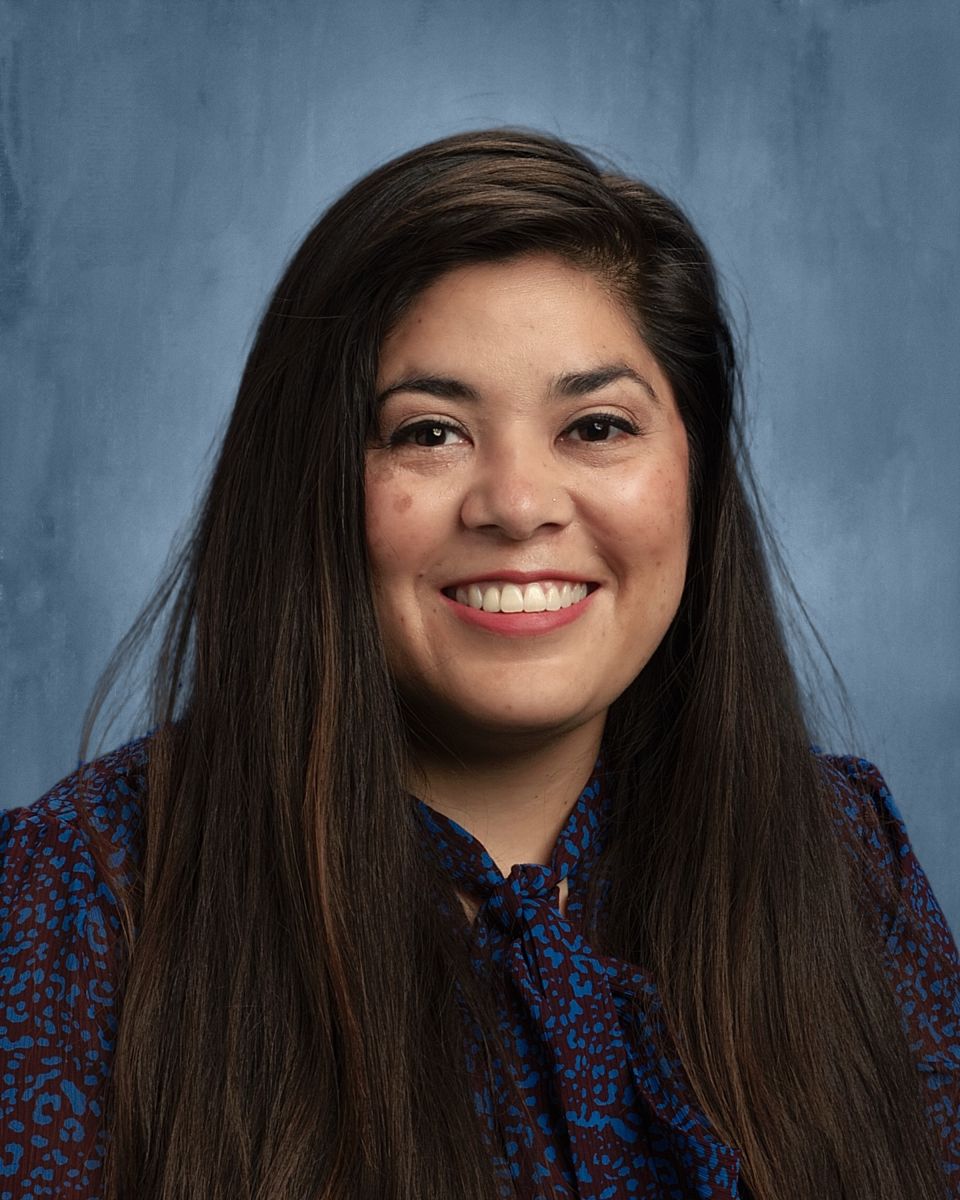
Hello! I'm Jessica Garcia and I teach Art 1, Drawing 1, and AP Art History at McCallum High School. With over 13 years of teaching experience, I've had the privilege of sharing my knowledge and love for art across diverse settings. My journey has taken me from the classrooms of San Angelo ISD and Hays CISD to the vibrant cultural landscape of Seoul, South Korea. I hold a BFA degree from Angelo State University. As an artist, I have created art pieces for galleries and fundraisers in San Angelo, Austin, and even as far as Seoul. I co-sponsor McCallum's National Art Honor Society (NAHS), where Ms. Massey and I guide and support the next generation of artistic talents. I am also a member of the Texas Art Education Association (TAEA) and the National Art Education Association (NAEA). When I'm not teaching, you'll find me traveling or cherishing moments with friends, family, and my 4 lb. canine companion, CJ.
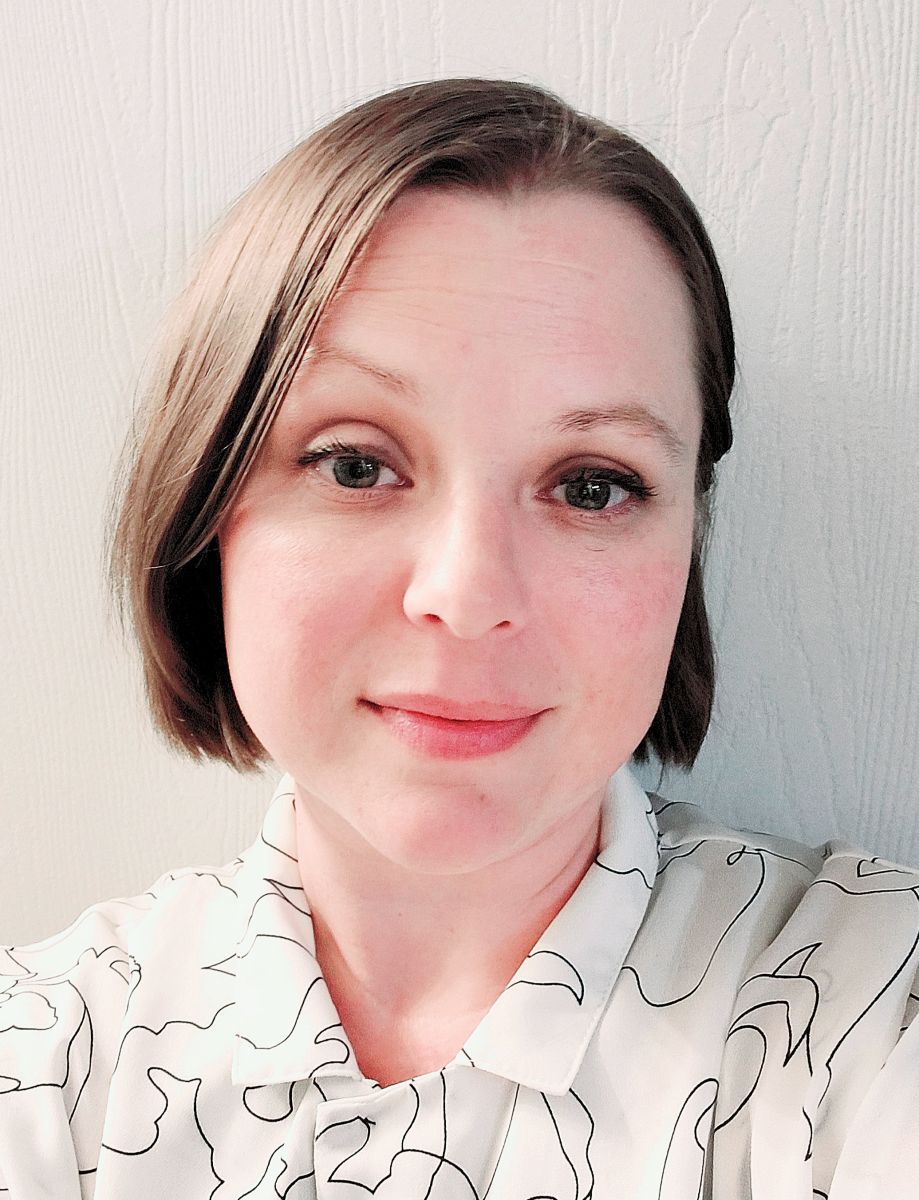
I have 12 years of experience as an art educator, and am currently teaching AP Drawing/2D Design, Design I, Drawing III and Painting I-III. I hold a BFA in Studio Art from Sam Houston State University, 2009, where I gained a deep understanding of both traditional and contemporary art techniques. I Believe that education within the arts is invaluable. It lends itself not only to creative expression, but personal ingenuity and resiliency in all areas of an individual's life.
Since 2004, I have created drawings, paintings, digital/manual photography, prints, sculptures and art installations that have been showcased in galleries and collective spaces. I have curated a variety of professional public art exhibitions in Columbus Ohio, Houston Texas and Austin Texas.
I have taught art techniques, conceptual demonstrations and workshops to middle school, high school, state and national art associations. I am a current member of TAEA, where I was awarded Art Educator of the year in 2021-2022 and am also a member of NAEA, co-sponsor to the McCallum NAHS Art Society. I have been a writing cadre for the visual arts curriculum contributing to Austin ISD and CEDFA (Center for Educator Development in the Fine Arts). My students and I have collaborated with Austin Pets Alive, Austin Symphony Orchestra, Blanton Museum of Art, Bullock Texas State History Museum, The Contemporary Austin, Emma S. Barrientos Mexican American Cultural Center and the Texas Cultural Trust: ART CAN campaign, to promote art education in the state of Texas. (https://www.youtube.com/watch?v=eMu4foVxFrM).

Natalie Pantuso
Visual Arts Faculty
natalie.kleineckepantuso@austinisd.org
Art Portable
Natalie Kleinecke Pantuso is a passionate art educator and multidisciplinary artist with 11 years of experience teaching high school art. She received her Bachelor of Fine Arts in Studio Art with a specialization in drawing from Texas State University in 2008. Inspired by her love for travel, she taught internationally for two years in Honduras before moving back to Central Texas. Her work was selected for the 2009 Texas Biennial, and she has shown regionally in and around Austin. She has experience as an art preparator for the Mitte Gallery at Texas State University and for the Blanton Museum of Art. Mrs. Pantuso joined the McCallum community in 2022. She teaches Art I and co-sponsors the Environmental Knights. When not at school, Mrs. Pantuso enjoys being outdoors and spending time with her husband and their two young children.

Abby Burnham
Visual Arts Faculty
Rm 160
Hello McCallum! I am an Educator and Ceramicist with 18 years of teaching experience in High School Visual Arts. I grew up in Michigan and attended Michigan State University, where I received a BFA in Art Education with a dual Studio degree in Ceramics & Printmaking, and a minor in Mathematics. After Graduation I moved to Austin and began my career in AISD, and I made the move to McCallum at the beginning of the 2022 school year. Some of the highlights of my career are that I have worked to earn my National Board Certification, I started a Jewelry Program at my previous school that has grown and thrived, and I continue to work tirelessly to build a love and appreciation of Visual Arts to all of my students. My teaching Philosophy focuses strongly on every student's ability to grow as an artist and that process, experimentation and even “failure” are critical growth indicators. The ability to persevere through challenges is a skill that will help students in all facets of their life. I model this emphasis on growth in the classroom, and I consider myself to also be a lifelong learner. I regularly engage in workshops, community College classes, and professional organizations to learn new skills and support my own artist growth.
In my personal practice, I focus mainly on Ceramic and Jewelry arts, working under my maiden name: Abby Rose Mandel. I create functional pottery with an emphasis on surface decoration and color exploration. The work is a combination of slip cast porcelain, using molds created by the artist, and hand built forms with an emphasis on slab construction. Once constructed and bisque fired, each piece is then sanded, meticulously hand painted and layered with decals to create a unique piece of illustrated clay. The final pieces are then fired to a hot cone 5 in an electric kiln. I have shown my work professionally as a participant in the EAST Austin Studio Tours for the past 10 years and will be showing work at the Texas Clay Festival for the 3rd year in October of 2023.
When not teaching or creating my own art, I am spending all my time with my partner and kids. We have 3 young kids, ages 8, 6, and 2, and they fill our lives with love, chaos, and adventure.
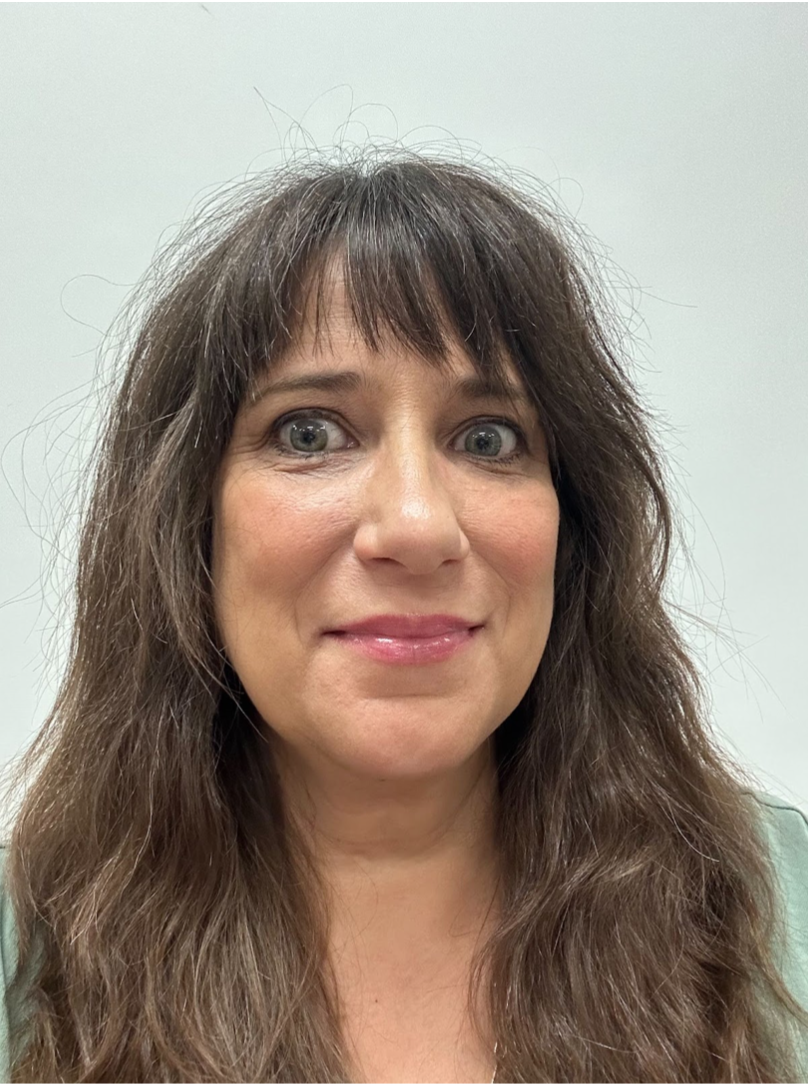
Carey West
Visual Arts Faculty
Art 3 (MAC)
I am a ceramic artist and educator with a passion for clay that has spanned over two decades. With 20 years of teaching experience, I have had the privilege of guiding and inspiring countless students in their artistic journeys. My expertise lies in both traditional and contemporary ceramic techniques, allowing me to offer a well-rounded and comprehensive education to those under my instruction.
I pursued formal training in fine arts with a focus on ceramics during my undergraduate years. This foundational knowledge laid the groundwork for my subsequent exploration and experimentation with clay. Over the years, I have continued to refine my skills through workshops, residencies, and collaborations with fellow artists. As an educator, I have had the opportunity to teach ceramics at various levels, ranging from community art centers to high school settings. My teaching philosophy centers on creating a supportive and inclusive environment that encourages creativity, self-expression, and personal growth. In addition to my teaching practice, I have exhibited my ceramic artwork in numerous galleries and participated in community shows. As a ceramic artist and educator, I am committed to sharing my knowledge, skills, and passion for ceramics with others. I believe in the transformative power of clay and its ability to connect people across cultures and generations. My journey as an artist and educator continues to be a source of inspiration and fulfillment, and I look forward to many more years of creating and teaching in the world of ceramics.

